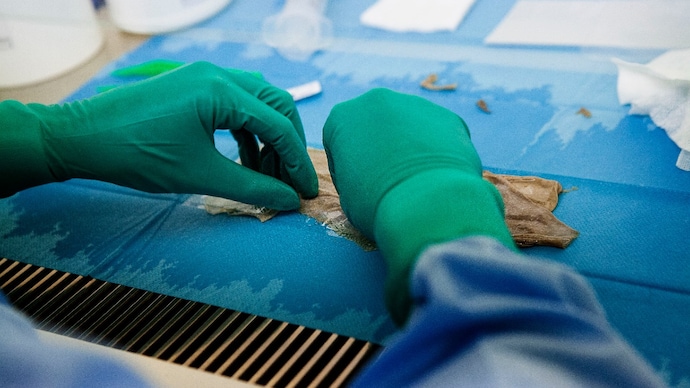The Indian Army has initiated a new skin bank facility to aid in the treatment of severe skin burn injuries and other related conditions for military personnel and their families.
Facility Overview
- Purpose: To collect, process, store, and distribute skin grafts.
- Staff: Includes trained medical professionals like plastic surgeons, tissue engineers, and specialized technicians.
Functionality
- Operation: Centralized hub within Armed Forces Medical Services.
- Resource: Critical for military medical centers nationwide.
Lt Gen Ajith Nilakantan’s Statement
- Mentions the establishment of the skin bank as part of the Armed Forces Organ Retrieval and Transplant Authority (AORTA).
- Highlights the licensing and operational aspects of the facility.
Skin Banking Process
- Donation: Skin is donated from deceased individuals.
- Processing: Tested for infections, processed, and frozen until required.
- Usage: Primarily for skin grafting procedures in burn victims.
Skin Grafting Procedure
- Types: Autograft (from patient’s own body) and allograft (from a donor via skin bank).
- Steps: Harvesting healthy skin, transplanting, and monitoring integration.
Benefits of Skin Grafting
- Impact: Reduces mortality, enhances healing, and reduces hospital stays and costs.
Donation Criteria and Restrictions
- Eligibility: Minimum age 18, regardless of sex or blood group.
- Exclusions: Individuals with certain infections or diseases like AIDS, Hepatitis B & C, etc.
Preservation and Storage
- Method: Preserved in 85% glycerol solution.
- Temperature: Stored at 4-5 degrees Celsius for up to 5 years.
Additional Skin Bank Centers in India
- Locations: Established in North India (Safdarjung Hospital, New Delhi) and other regions (Maharashtra, Chennai, Karnataka, Madhya Pradesh, Odisha).
Multiple-Choice Questions (MCQs) with Answers:
- What is the primary purpose of the skin bank recently launched by the Indian Army?
- A) Organ transplantation
- B) Treatment of burn injuries
- C) Blood donation
- D) Cancer treatment
- Answer: B) Treatment of burn injuries
- Which medical professionals are involved in operating the skin bank?
- A) Cardiologists
- B) Plastic surgeons and tissue engineers
- C) Dentists
- D) Psychologists
- Answer: B) Plastic surgeons and tissue engineers
- How long can donated skin be preserved in the skin bank’s storage conditions?
- A) Up to 1 year
- B) Up to 3 years
- C) Up to 5 years
- D) Up to 10 years
- Answer: C) Up to 5 years
- Which temperature range is maintained for storing skin in the skin bank?
- A) 0-2 degrees Celsius
- B) 2-4 degrees Celsius
- C) 4-5 degrees Celsius
- D) 5-7 degrees Celsius
- Answer: C) 4-5 degrees Celsius
- Who is eligible to donate skin to the skin bank?
- A) Only males
- B) Only females
- C) Anyone aged 18 years or older
- D) Only those with O+ blood group
- Answer: C) Anyone aged 18 years or older
